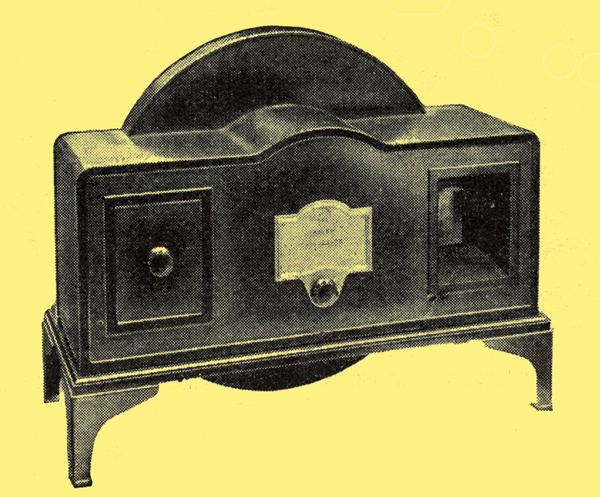|

The Baird 'Televisor' - The first commercial television set to receive the 30-line pictures (1929-1935) transmitted through the BBC
Baird's 30-line mechanical television system, with flying spot scanning, was now sufficiently developed for the BBC to give experimental transmissions of it for half-an-hour a day; these were continued until 1935. The broadcasting of 'still' pictures by the Fultograph system by the BBC and many European countries enjoyed a short-lived vogue.
Spark transmission for ships and coast stations was slowly giving way to ICW (interrupted continuous wave); for long-distance point-to-point communication short waves had almost entirely replaced long-waves except on the N Atlantic circuit.
Broadcast receivers were now built more or less in the modern manner, with metal chassis and, quite often, built-in speakers. Mains sets with the recently introduced indirectly-heated valves were commonplace. But there were still few sets with ganged tuning. Efforts were being made to provide greater selectivity in preparation for the 'Regional' broadcasting plan, which was to offer listeners a choice of two programmes. The architect of the scheme, of which many traces remain in the present BBC distribution system, was P P Eckersley, then chief engineer, who for many years has projected his ebullient personality and original thoughts through occasional Wireless World articles.
|